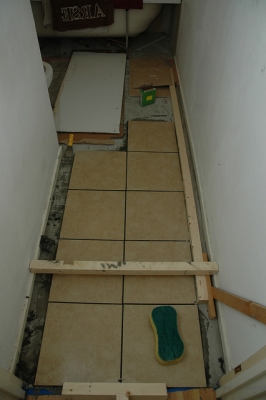Tips for Installing Electric Underfloor Heating Systems

If you're looking for an efficient heating system for your home, underfloor heating systems provide consistent, even heating for your rooms. Underfloor systems utilise electric heating elements or water pipes installed beneath your floor. The system heats up your floor, and the heat radiates into your rooms evenly and consistently, increasing your comfort level and eliminating cold spots. While water underfloor systems are less expensive to operate than electric underfloor heating systems, an electric system may be the better choice for you, depending on these factors:
Electric underfloor systems are much less expensive to install. In fact, kits are available that allow you do the installation yourself, with the exception of hooking up your system to the electrical mains and thermostat, which must be done by a qualified professional.
Installation is easier with an electric underfloor system. Water systems require several inches of clearance beneath the floor. Depending on the construction of your home, installing a water system could involve raising the floor to accommodate the pipes, considerably increasing the cost of installation.
If your home isn't connected to the gas mains, an electric system is a more energy-efficient option for electric heating than other types of systems, including forced air furnaces and baseboard heating systems.
If you're a competent DIYer, you may be able to install your electric underfloor system yourself. Mesh mats containing the electrical cables are laid beneath the flooring in your rooms, which are then covered with the flooring of your choice.
Components of Electric Underfloor Heating Systems
In addition to the electric mats, you'll need several related components. If you purchase an installation kit, these components will likely be included.
Electrical junction box to connect the cold leads of the heating mats.
A grounding net for installation in wet areas, such as kitchen and bathrooms.
A thermostat to control the room temperature.
Hard insulation for installation beneath floors that will be installed using adhesive.
Soft insulation for installation beneath other floor types, such as floating laminate floors or carpeting.
Planning and Preparing Your Installation
Draw a diagram that depicts the layout of your electric mats, as well as the location of your junction box and thermostat. Determine how many heating mats you will need, ensuring that at least 65 percent of the floor area is covered. Plan to use larger heating mats for the bulk of the installation, with smaller mats used as fillers.
When you're ready to install your mats, remove the existing flooring and thoroughly clean and vacuum the floor base.
Installation Tips
Your underfloor heating kit will include detailed instructions for installation. These tips will give you an idea of the factors to consider when planning your installation and help you optimize the actual installation.
Don't overlap your heating mats.
Keep the mats flat. Don't fold or bend them, as this can damage the electrical cables imbedded in the mats.
Don't place heavy objects on the mats or step on the cables.
Make sure the temperature in the room is above 23 degrees Celsius when installing your mats.
Don't install mats beneath heavy cabinets or fixtures, such as toilets and sinks.
Keep mats at least 3 cm away from cold water pipes, 10 cm away from the walls and 15 cm away from hot water pipes and fireplaces.
Plan on a dedicated electrical circuit for your system, and don't connect any other electrical devices to that circuit.
Don't overlap the mats. Maintain a space of 5 cm between mats.
If your mats will be covered with adhesive flooring, cover them with self-leveling cement or plywood sheets before installing the flooring.
Place the thermostat away from heat-generating appliances, fireplaces and exterior doors and windows.
A qualified electrician will need to hook up your system to the electrical mains and the thermostat.
Make sure you understand the specifications of your system and the installation instructions before beginning your installation. If you feel you're not qualified to install the system yourself, contact an underfloor heating specialist to install the system for you.
Kristen Bailey enjoys writing about topics that help consumers make educated choices to save money and conserve natural resources.
